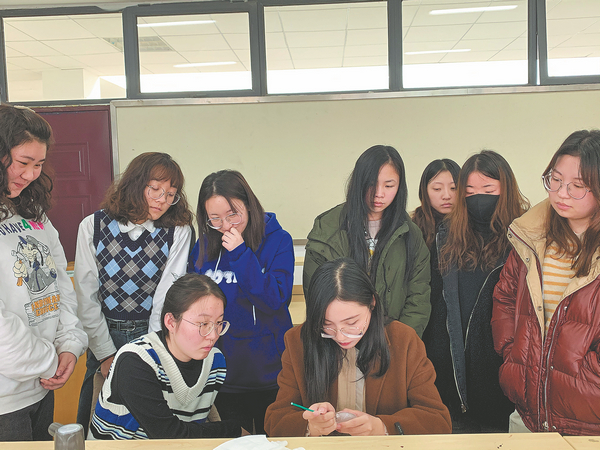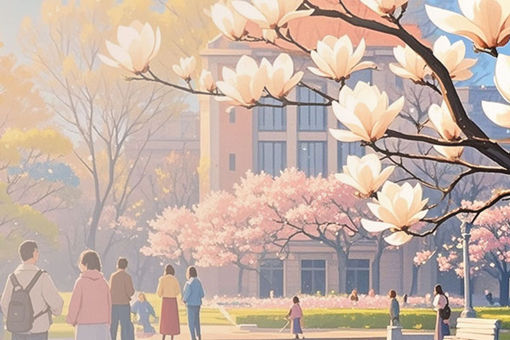Bottling up their talent
By Yang Feiyue| (China Daily)| Updated : 2023-07-24
Print PrintEvolution of the craft
The development of snuff bottles was closely related to interior painting, says Zhang Guangqing, a national arts and crafts master.
During the late Ming Dynasty (1368-1644), Matteo Ricci, an Italian missionary, presented snuff as a tribute to Emperor Wanli. In the Qing Dynasty (1644-1911), the nomadic lifestyle of the Manchu people, who traveled on horseback, made snuff even more popular.
As a result, snuff bottles became a symbol of the aristocracy. However, with the rise of tobacco, snuff seemed to have, well, snuffed it.
But a surprising turn of events happened when the snuff bottles gradually lost their practical value. The aristocrats started to see them as playthings and added some bells and whistles, hence inside-painted snuff bottles coming into being.
"Interior painting once relied on a bamboo brush dipped in pigments, making it difficult to control the thickness of lines and variations in solidity," Zhang says.
It was Xue Jingwan, a master painter, who invented the special bamboo pen in the 1950s and introduced the techniques of hooking, cross-hatching, rubbing, dotting, and coloring from traditional Chinese painting into inside-painted art.
This breakthrough improved the diversity of interior painting expressions, Zhang says.
As the country is paying more attention to its traditional crafts and has stepped up its intangible cultural heritage protection efforts, interior painting has been given a new lease on life and infused with modern elements.
In the past, the painting was done with ceramic pigments, which were fired. This presented a relatively rough glazed texture, says Li.
"Today, we use more vibrant and delicate traditional Chinese painting pigments instead," she adds.
Eight years of practice have seen Li get all the demanding skills down to a fine art, literally.
"The key during the creation is to keep a peaceful mind," Li says.
Li was exposed to the charm of the art since childhood under her father, Li Huitong, a master of interior painting with more than three decades of experience.
She showed a great interest in painting, from initial doodling to advanced sketching. Dedicated training then gave her a sensitivity to shape, size and methods of graphically depicting spatial relationships.

Li demonstrates interior painting at a school in Zibo, Shandong province. CHINA DAILY
The training paved the way for her study of porcelain art, with a focus on paining, at Jingdezhen Ceramic University in Jiangxi province.
After grasping essential sketching and watercolor skills, Li Shaoyue began to concentrate her mind on Chinese painting.
"My ultimate goal back then was to contribute to the development of ceramics," she says.
However, images of her father holding her hand doing the interior painting frequently emerged in her mind after her graduation in 2015, especially after her father was yearning for her to return home and carry on the family tradition.
Moreover, Wang Xiaocheng, curator of the Shandong-styled interior painting museum, also hoped she could come back and contribute to the development of the art.
Li Shaoyue then followed her gut feelings and tried her hand at the local art, initially at Wang's museum.
Wang told her that he was looking forward to her giving expressions to more modern subjects in interior painting while carrying forward the traditional themes.

 Xi's Moments
Xi's Moments  Shandong gains remarkable results in promoting high-quality development
Shandong gains remarkable results in promoting high-quality development  Discover magnolia blossoms at Shandong University
Discover magnolia blossoms at Shandong University